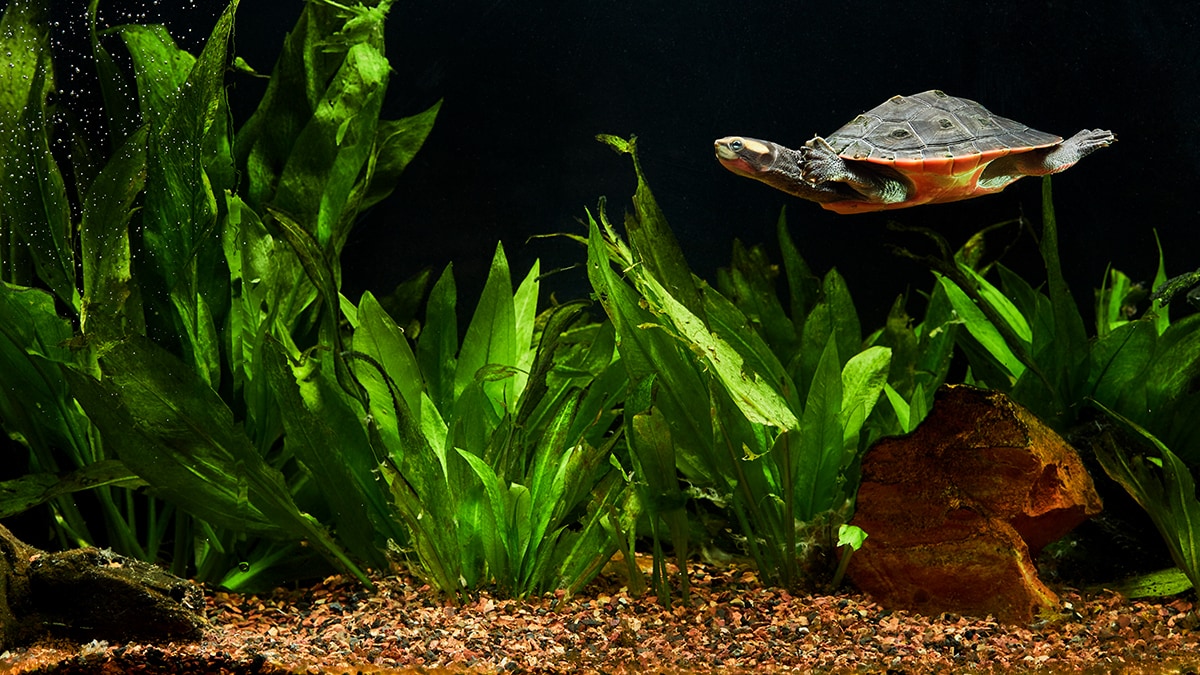In the fascinating world of keeping turtles as pets, it is crucial to understand and manage the water pH levels in indoor turtle enclosures. Maintaining the right pH levels is essential for these delightful reptiles to thrive and lead a healthy life. This article will delve into the significance of water pH levels, the optimal range for turtles, and effective ways to manage and regulate the pH levels in their enclosures. Whether you are a seasoned turtle enthusiast or a new owner, this article will equip you with the knowledge and tools to provide the best possible environment for your aquatic companions. So, let’s dive into the intricate world of water pH levels and ensure your indoor turtle enclosure remains a haven for your beloved turtles.
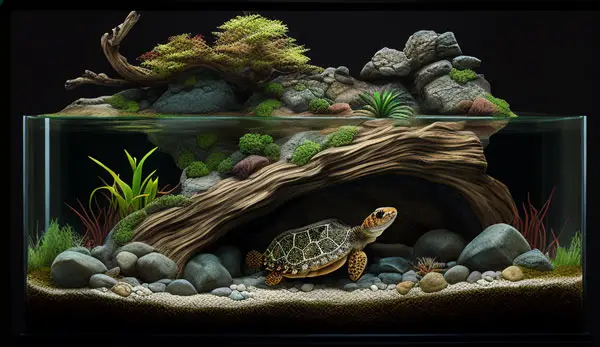
1. Importance of Water pH Levels in Indoor Turtle Enclosures
1.1 Promoting the Health and Well-being of Turtles
Maintaining appropriate water pH levels is of utmost importance when it comes to the health and well-being of turtles in indoor enclosures. Just like humans, turtles rely on the proper balance of pH levels in their environment to thrive. Since turtles spend a significant amount of time in the water, the quality of their aquatic habitat is crucial.
1.2 Creating an Optimal Habitat
Maintaining the right pH levels in the water is essential for creating an optimal habitat for turtles. The water serves not only as a medium for turtles to swim and feed in but also as a source of hydration and oxygenation. By ensuring that the pH levels are within the appropriate range, you can create a comfortable and life-sustaining environment for your indoor turtles.
1.3 Avoiding Potential Health Issues
Improper pH levels can have detrimental effects on the health of turtles. Fluctuations in pH can cause stress and weaken the turtles’ immune system, making them more susceptible to diseases and infections. It can also impact their ability to absorb vital nutrients from their food, leading to malnutrition and stunted growth. By maintaining balanced pH levels, you can significantly reduce the risk of health issues and ensure the longevity of your turtles.
2. Factors Affecting Water pH Levels
2.1 Source and Quality of Water
The source and quality of the water used in the turtle enclosure can have a significant impact on pH levels. Municipal tap water may have additives such as chlorine or chloramine, which can affect the pH balance. It is crucial to use dechlorinated water or to treat tap water appropriately before adding it to the enclosure.
2.2 Biological Activity in the Enclosure
The biological activity within the turtle enclosure can also influence water pH levels. Turtles produce waste, and the process of waste breakdown can lead to the release of ammonia, which can increase pH levels. Additionally, the metabolism of live plants and other organisms present in the enclosure can contribute to fluctuations in pH.
2.3 Waste and Decomposition
As mentioned earlier, waste from turtles and the decomposition of organic matter can impact water pH levels. The breakdown of waste and organic matter releases various compounds that can alter the pH balance. Regular cleaning and removal of waste can help prevent significant fluctuations in pH.
2.4 Addition of Substrates or Decorations
Certain substrates or decorations added to the turtle enclosure may also affect water pH levels. For example, limestone or shells can increase the pH due to their alkaline nature. It is important to research and choose appropriate substrates and decorations that will not disrupt the pH balance.
2.5 Regular Water Changes
Regular water changes are crucial for maintaining stable pH levels. If pH levels become imbalanced, a partial water change can help restore the desired balance. A regular water change routine ensures that any potential pH-altering substances are removed, promoting a healthier and more stable environment for your turtles.
3. Measuring Water pH Levels
3.1 Importance of Accurate pH Measurements
Accurate measurement of water pH levels is essential for maintaining the well-being of your turtles. Without proper measurements, you may not be aware of any imbalances that could be detrimental to your turtles’ health. Regular monitoring and precise measurements allow you to identify and address any issues promptly.
3.2 pH Testing Kits and Meters
To accurately measure water pH levels, you can utilize pH testing kits or meters specifically designed for aquariums and reptile habitats. These kits typically include pH testing solutions or test strips that change color based on the pH balance of the water. pH meters provide a digital reading, offering more precise measurements. Investing in a reliable testing kit or meter is key to ensuring the accuracy of your pH measurements.
3.3 Understanding pH Scale
The pH scale ranges from 0 to 14, with 7 being neutral. Values below 7 indicate acidity, while values above 7 indicate alkalinity. For turtles, the ideal pH range is usually between 6.5 and 7.5, depending on the species. It is important to understand the pH scale to interpret the measurements correctly and make adjustments accordingly.
3.4 Ideal pH Range for Turtles
As mentioned earlier, the ideal pH range for turtles generally falls between 6.5 and 7.5. However, it is important to research the specific requirements of the turtle species you are keeping, as different species may have slightly different pH preferences. By maintaining the recommended pH range, you can create an environment that closely mimics their natural habitat, supporting their overall health and well-being.
4. Maintaining Proper Water pH Levels
4.1 Monitoring pH Levels Regularly
Regular monitoring of water pH levels is crucial for maintaining a balanced and healthy environment for your turtles. By testing the pH at least once a week, you can detect any changes or fluctuations promptly. This allows you to take immediate action to correct imbalances and ensure the water in the enclosure remains within the optimal pH range.
4.2 Adjusting pH Levels
If you notice that the pH levels in the turtle enclosure are outside the ideal range, adjustments will be necessary. However, it is important to make gradual adjustments rather than rapid changes, as sudden pH fluctuations can stress the turtles. Slowly lowering or raising the pH over time is recommended to prevent any adverse effects on the turtles’ well-being.
4.3 Natural Methods of pH Adjustment
There are several natural methods you can employ to adjust water pH levels in your turtle enclosure. The addition of driftwood or peat moss can help lower the pH as they release tannins and other organic compounds. Conversely, crushed coral or limestone can help raise the pH if it is too acidic. These natural methods can help you maintain a more stable pH balance without relying on chemical adjusters.
4.4 Chemical pH Adjusters
In some cases, the use of chemical pH adjusters may be necessary to rectify significant pH imbalances. These adjusters come in various forms, including pH increasers and pH decreasers, and can quickly bring the pH levels back into the appropriate range. However, it is essential to exercise caution and follow the instructions provided by the manufacturer when using chemical adjusters, as excessive use or incorrect dosing can be harmful to your turtles.
4.5 pH Buffering
Another method to maintain stable pH levels is through the use of pH buffering substances. pH buffers help stabilize the pH by preventing drastic changes caused by factors like waste decomposition or substrate leaching. They work by absorbing excess acids or alkalis, thereby maintaining a more consistent pH. Utilizing pH buffering products can provide added stability to the water conditions in the turtle enclosure.
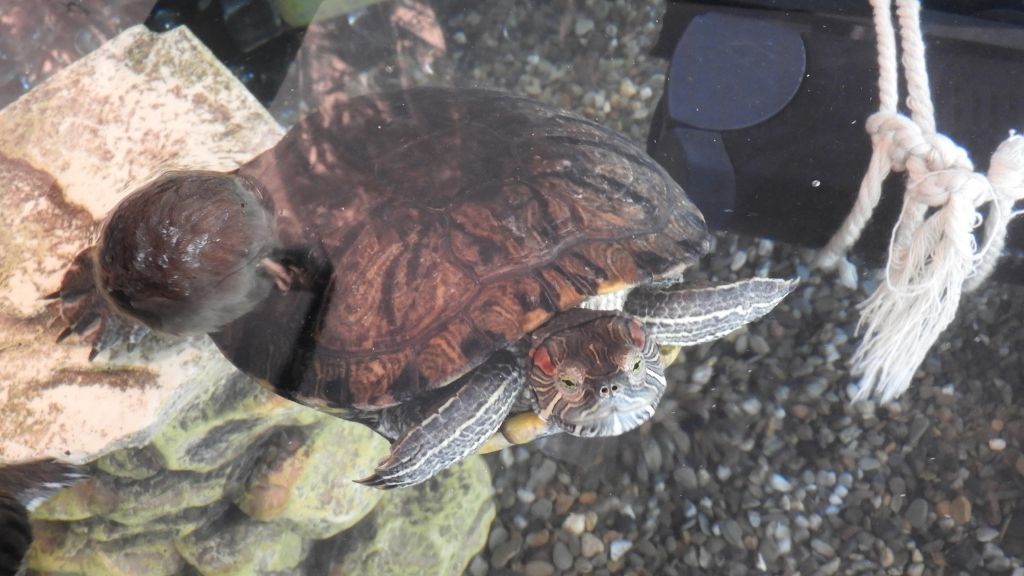
5. Tips for Managing Water pH Levels in Indoor Turtle Enclosures
5.1 Consistency in Water Source
Maintaining consistency in the water source used for the turtle enclosure can help promote stable pH levels. If possible, use the same source of water for all water changes to prevent any variations in pH caused by different water sources. This consistency ensures a more reliable and predictable environment for your turtles.
5.2 Controlling Biological Activity
Regularly controlling and monitoring the biological activity within the turtle enclosure can help manage water pH levels. Implementing a well-functioning filtration system, removing excess waste, and ensuring proper circulation can reduce the chances of significant pH fluctuations. This can be achieved by choosing an appropriately sized and efficient filter for your enclosure.
5.3 Proper Cleaning and Maintenance
Proper cleaning and maintenance of the turtle enclosure is paramount in maintaining optimal water conditions. Regularly removing debris, decaying matter, and excess waste helps prevent the release of compounds that can alter pH levels. Additionally, thorough cleaning of filter media and equipment prevents the accumulation of organic pollutants that can impact the pH balance.
5.4 Appropriate Substrate and Decoration Selection
The selection of suitable substrates and decorations in the turtle enclosure can greatly contribute to maintaining stable pH levels. Avoid using substrates or decorations that can release compounds that alter pH. Researching the compatibility of the materials with your desired pH range is vital. Choosing natural materials such as gravel or sand that do not significantly impact pH can help create a more harmonious habitat for your turtles.
5.5 Establishing a Water Change Routine
Establishing a regular water change routine is essential for managing water pH levels. Regular water changes help remove accumulated waste, excess nutrients, and any potential pH-altering substances. The frequency and amount of water changes may vary depending on factors such as the turtle species, enclosure size, and biological activity. Consistency in your water change routine is key to maintaining stable pH levels.
6. Common Problems and Solutions
6.1 High or Low pH Levels
If you encounter consistently high or low pH levels in your turtle enclosure, it is important to take prompt action to correct them. Adjusting the pH gradually using natural methods or chemical adjusters, as mentioned earlier, can help bring the levels back to the recommended range. Regular monitoring and adjustment will help prevent any long-term negative effects on your turtles’ health.
6.2 Algae Growth
Algae growth is commonly associated with imbalanced water conditions, including pH fluctuations. Regular maintenance, proper filtration, and appropriate lighting can help control algae growth. Additionally, reducing excess nutrients in the water and keeping the turtle enclosure clean can discourage algae growth and help maintain ideal pH levels.
6.3 Cloudy or Discolored Water
Cloudy or discolored water can be a sign of bacterial or fungal blooms, which may be linked to pH imbalances. Proper filtration, regular water changes, and excellent water quality management can help address this issue. Ensuring that the turtle enclosure is not overcrowded and providing adequate aeration can also assist in preventing cloudy or discolored water.
6.4 Foul Odor
A foul odor emanating from the turtle enclosure is often an indicator of poor water quality, which can be connected to pH imbalances. Regular cleaning, proper filtration, and adequate water circulation are essential for preventing foul odors. Additionally, monitoring waste buildup and removing it promptly can help maintain a clean and odor-free environment.
6.5 Illness or Abnormal Behavior
Water pH imbalances can contribute to stress and weaken turtles’ immune systems, making them more susceptible to illness or abnormal behavior. If you notice signs of illness, such as lethargy, loss of appetite, or unusual behavior, it is crucial to consult a veterinarian who specializes in reptiles. Proper veterinary care, combined with maintaining optimal pH levels, can help prevent and manage potential health issues.
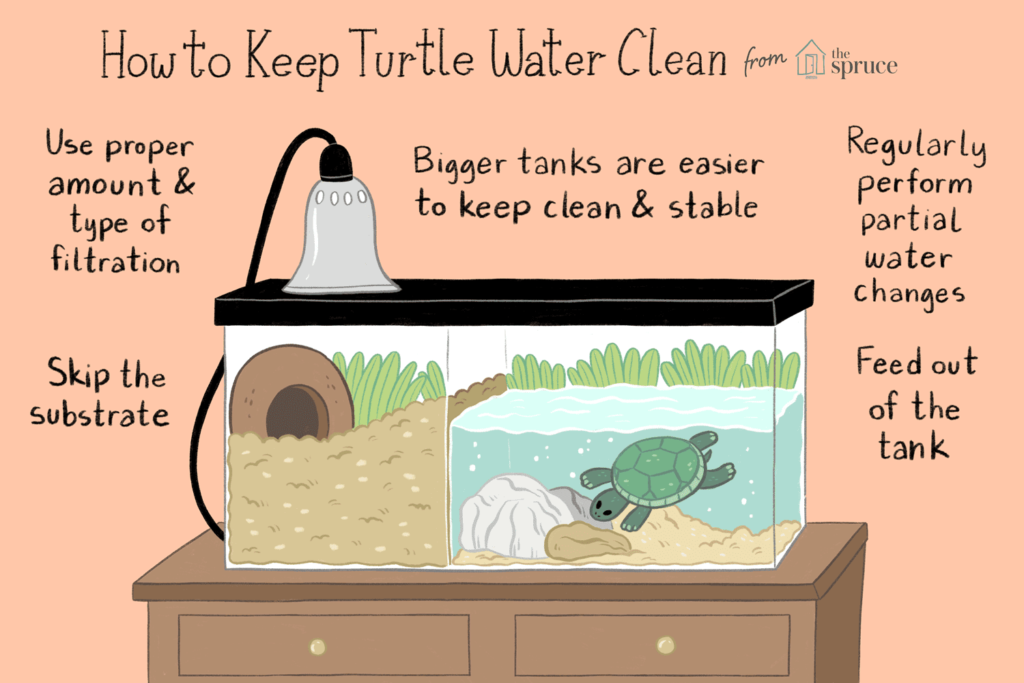
7. Preventative Measures for Water pH Imbalance
7.1 Regular Water Testing and Monitoring
Regular water testing and monitoring are essential preventative measures to ensure the stability of pH levels in the turtle enclosure. By closely monitoring the pH levels, you can identify any deviations and take immediate corrective actions before they escalate. Prevention is often the key to maintaining optimal water conditions for your turtles.
7.2 Proper Filtration and Circulation
Investing in a high-quality filtration system and ensuring proper water circulation is crucial for preventing pH imbalances. An efficient filter will effectively remove waste and excess nutrients, helping to maintain water quality and minimize fluctuation in pH levels. Good water circulation also prevents stagnant areas that can lead to localized accumulation of waste or imbalances.
7.3 Monitoring Turtle Diet and Waste
Keeping a close eye on your turtles’ diet and waste production is vital for preventing pH imbalances. An appropriate diet that meets the nutritional needs of your turtles helps promote healthy digestion and waste production. Monitoring the amount and consistency of waste can help you gauge the overall health of your turtles and make any necessary adjustments to their diet or enclosure conditions.
7.4 Avoiding Overcrowding
Overcrowding can contribute to poor water quality and imbalanced pH levels. Providing adequate space for your turtles to swim and move around is crucial for their well-being. Overcrowding can lead to increased waste production, higher ammonia levels, and subsequent pH imbalances. Keeping a suitable number of turtles in your enclosure is essential for maintaining optimal water conditions.
7.5 Addressing Environmental Stressors
Turtles can experience stress from various environmental factors, and stress can impact their overall health and immune response. Addressing and minimizing environmental stressors, such as excessive noise or vibrations, sudden temperature fluctuations, or inadequate hiding spots, can reduce the risk of pH imbalances. A stress-free environment helps promote the overall well-being of your turtles.
8. Seeking Professional Advice
8.1 Consulting a Veterinarian
When it comes to the health and well-being of your indoor turtles, consulting a veterinarian is always a wise decision. A reptile veterinarian can provide expert guidance, diagnose and treat any health issues, and offer specific advice tailored to your turtles’ needs. Regular veterinary check-ups can help ensure that your turtles remain healthy and thriving in their enclosure.
8.2 Reaching out to Reptile Care Experts
Reptile care experts can provide invaluable assistance and guidance when it comes to managing water pH levels in indoor turtle enclosures. They possess in-depth knowledge and experience in reptile husbandry and can offer recommendations specific to your turtles’ species and needs. Utilizing their expertise can help you navigate any challenges and ensure optimal conditions for your turtles.
8.3 Joining Reptile Enthusiast Communities
Joining reptile enthusiast communities and forums can be a great way to connect with fellow turtle owners and enthusiasts. These communities often provide a platform for discussions, sharing experiences, and seeking advice. Engaging with other turtle keepers can offer insights into managing water pH levels and offer support in troubleshooting any issues you may encounter.
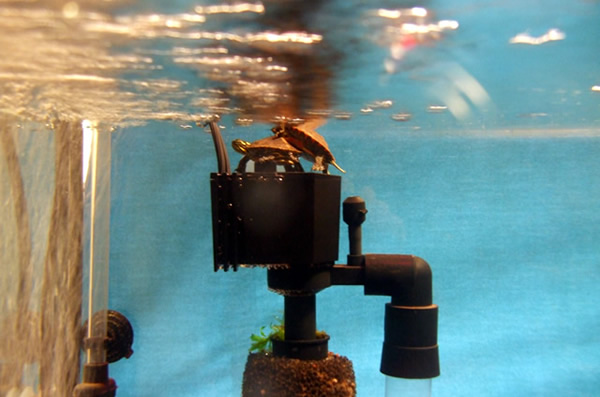
9. Conclusion
Maintaining the appropriate water pH levels in indoor turtle enclosures is crucial for promoting the health, well-being, and longevity of your turtles. By understanding the factors influencing pH, measuring and monitoring pH levels accurately, and taking proactive steps to maintain the desired range, you can create a stable, comfortable, and healthy habitat for your turtles. By following the tips and guidance provided in this article, you can confidently manage and optimize water pH levels in your indoor turtle enclosure. Remember, a balanced pH leads to happier and healthier turtles.
